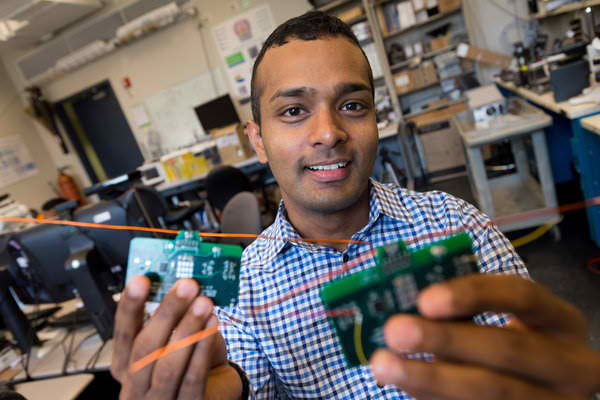The New York Times reports on power harvesting technologies, including UW’s “Ambient Backscatter“:
“The next breakthrough smartphone, or maybe the one after that, might not have a traditional battery as its sole source of power. Instead, it could pull energy from the air or power itself through television, cellular or Wi-Fi signals …
“‘Hoping and betting on new battery technology to me is a fool’s errand,’ said [Tony] Fadell, who is now the chief executive of Nest, which makes household technology and was bought by Google last month. ‘Don’t wait for the battery technology to get there, because it’s incredibly slow to move’ …
“Researchers at the University of Washington have also been working on a method for wireless devices to communicate without using any battery power. The technique involves harvesting energy from TV, cellular and Wi-Fi signals that are already in the air, said Shyamnath Gollakota, an assistant professor of computer science and engineering who is working on the project.
“‘The idea is basically you have signals around you,’ Mr. Gollakota said. ‘So why do you have to generate new signals to communicate?’
“In a commercial smartphone, a battery would still be necessary for powering the screen and other functions, but the signal-harvesting method would allow phone calls or text messages to be placed without using any power, he said.”
Read the New York Times article here. Learn more about Ambient Backscatter here. (The Ambient Backscatter team includes faculty members Shyam Gollakota, Josh Smith, and David Wetherall, and graduate students Vincent Liu, Aaron Parks, and Vamsi Talla.)


